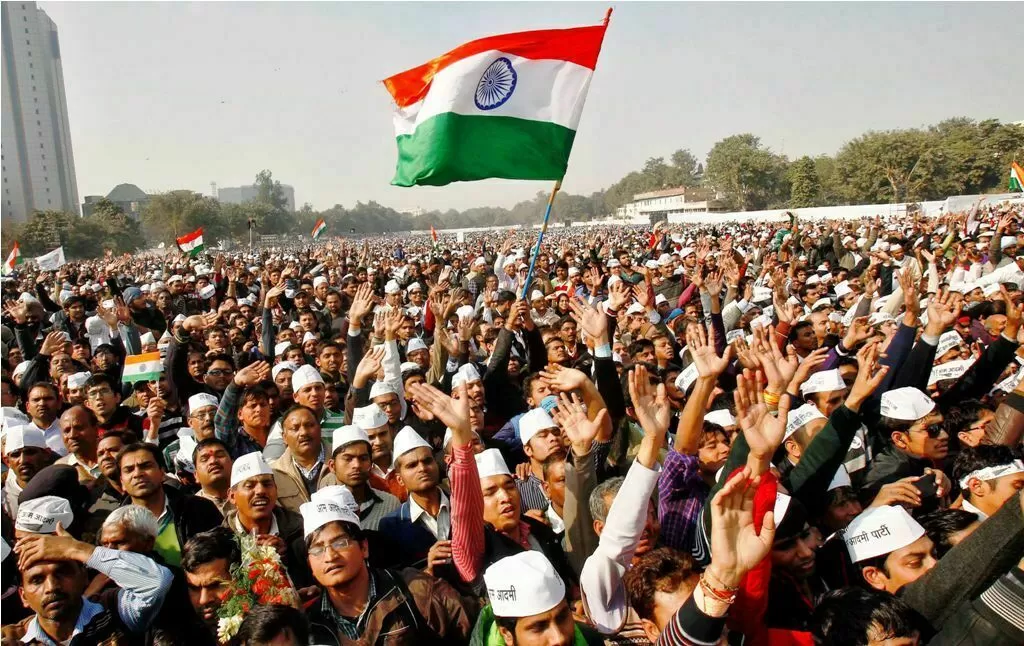Recent Delhi elections reposed faith of the common man on the vibrancy of Indian democratic system. Poulami Chakrabarty writes about AAP’s success story and the changing dynamics in Indian politics…
Everyone should get a second chance and this is proved when AAP won the Delhi state election last month. Youth proved to be a catalyst in both the elections – parliamentary and assembly. Both the waves, NaMo and AK67 have created a different perspective in the field of politics where no longer the legacy of family or the brand names worked.
AAP went for a strategic planning to ensure a smooth win this election in Delhi. Kejriwal and his party did not believe in big budgeted publicity and instead tried the techniques used by Obama, who created a world history by being the first black President of the U.S.A. The dramatic way Kejriwal resigned from the CM’s position after 49 days reminds us of the film Nayak where Anil Kapoor was the CM just for a day. They used the internet to create a large volunteer base and reached out to every person to get the vote.
In a room in Karawal Nagar, AAP candidate Kapil Mishra is with a laptop and a projector and is being helped by Varun Gupta who is from Seattle. The team is connected to another team in Seattle through a Google hangout and this is one of the ways in which the app is giving a boost to the campaign of AAP and fine tuning it further.
AAP appealed the youngsters to become the volunteers and that worked as a catalyst as youths got connected; the reach of the party extended to a wider people with one to one interaction. The volunteers did door-to-door campaigning; a new grass root organizational structure led by 40,000 volunteers and a fool-proof media plan which did wonders for AAP.
There are many reasons that BJP lost the battle to AAP, forget about the Congress which could not even open their account. BJP though needs to ponder over their results for not long ago they won all the seven Lok Sabha seats of Delhi.
The mobilization of anti-BJP votes by RSS went to the vote bank of AAP, where the former wanted a strong ‘counter-balance’ for BJP. Secondly, MP Krishna Tirath of Congress whom BJP gave a ticket and Kiran Bedi were the two factors with which both the BJP and RSS were unhappy.
These new members were given a position dragging the old member Harsh Vardhan out. Thirdly, the government officials were not happy with the BJP’s surprise visits and the reduction of the retirement age from 60 to 58. Fourthly, the exposed fuss about the Swach Bharat where Smriti Irani (HRD Minister) and Satish Upadhaya (Delhi unit President) went was a manipulative step as the streets were deliberately littered before they arrived, broom in hand.
Moreover, BJP could not gather much people from the region of Uttar Pradesh and Bihar but AAP involved most of them in their party. Fifthly, AAP’s promise to reduce the VAT was a tempting factor for the traders of Delhi. Sixthly, BJP accusing Kejriwal to be a Naxal back fired them by creating a negative impact on the people. Seventhly, declaring chief ministerial candidate was a pressure factor for BJP whereas AAP was quite sure about Kejriwal. The eighth factor that contributed to AAP’s success was Kiran Bedi, whose candidature was a trailing aspect for BJP, on the contrary, ArvindKejriwal was a projected candidate for CM’s post in Delhi. Another reason was that while BJP was busy utilizing their MPs and MLAs, AAP was far ahead in discussing the aam aadmi issues in the meetings and rallies. Lastly, the internal dissatisfaction with the chief ministerial candidate ‘Kiran Bedi’ in the BJP party was an added advantage for the AAP.
Arco Chakraborty, a 28 years old employee in Convergys says, “AAP basically is a common man’s answer to the political community that democracy still exists in this country. For long the major political parties have been taking the people of this country for granted, AAP is just a warning that if the major parties don’t mend their ways they will cease to exist. I don’t support blindly and I will be keeping a close eye on what they do in Delhi with such a huge mandate they got. For the moment, I m a happy Delhite, who is proud of his decision.”
While sources say the BJP spent close to Rs 60 crore on advertising during the assembly election, the AAP got a bigger bang for much less through its campaign that comprised radio and outdoor advertising and lots of social media activities. Media planners say it was AAP’s strategy and not its advertising budget that helped the party battle the Goliath.
While its media plan included radio, outdoor campaigns, on ground activities and social media, BJP’s advertising was carried primarily over print, outdoor, social media and onground outreach programs.The AAP didn’t hire any agencies for advertising, public relations or any other form of communication and used an in-house team to craft its messages, and banked on its volunteers to execute the communication strategy.
Aam Aadmi Party’s success in returning back to power lay in a team of young, suave and skilled men. Most of them gave up their blue collared jobs and studies — both in India and abroad — or took a sabbatical to change electoral politics and not merely the government. While a sound party leadership, easily accessed candidates and unrelenting volunteers featured in the biggest election success story for AAP, their backroom boys silently wrote the script.
They worked on various fronts — collecting donations, social media campaigns, outdoor publicity, volunteer training, besides research and surveys. 25 years old Durgesh Pathak came to Delhi for IAS entrance exams but chose to stay on, helping AAP in its door-to-door campaigns. Ankit Lal, who left his job with an IT firm to run AAP’s social media campaigns, said: “My father was part of the JP movement in 1974; he used to tell a lot of stories. On meeting Anna Hazare and Arvind Kejriwal, I found my true calling.”
The apologetic approach towards common people could make the people connect to the party. The wide participation of the young people energized the campaign and they could, if not sure, see a ray of hope. The youth could see themselves in AAP; they found the party to be clean and enthusiastic of improving the nation.
Students who support AAP, flooded the social media propagating and then celebrating the success of the party. With the saturated corruption in all the parties, AAP gets an opportunity to stand out of the box. People have tried both Congress and BJP and now are exploring other options and hence AAP has the huge responsibility to create a strong and corrupt-free image to strengthen the politics.
In the context of Assam, discontentment amongst people with the present regime is at its brink. Promises made during elections hardly gets materialized. There seems to be no invigorating ideas and vision. The youths are disenchanted with political blame game at its worst most of the time.
The resignation of one of the promising and vocal leader of BJP Mr. Pradyut Bora recently has rather established all is not well with the state BJP leadership. Mr. Bora demands idealism to be inculcated by the political parties so as to find out the root causes of serious societal issues.
Whoever comes to power, one thing is for sure that only the government cannot change the system, the common people too must cooperate in changing the system. Who else other than the young minds can bring a substantial change in Indian politics?







